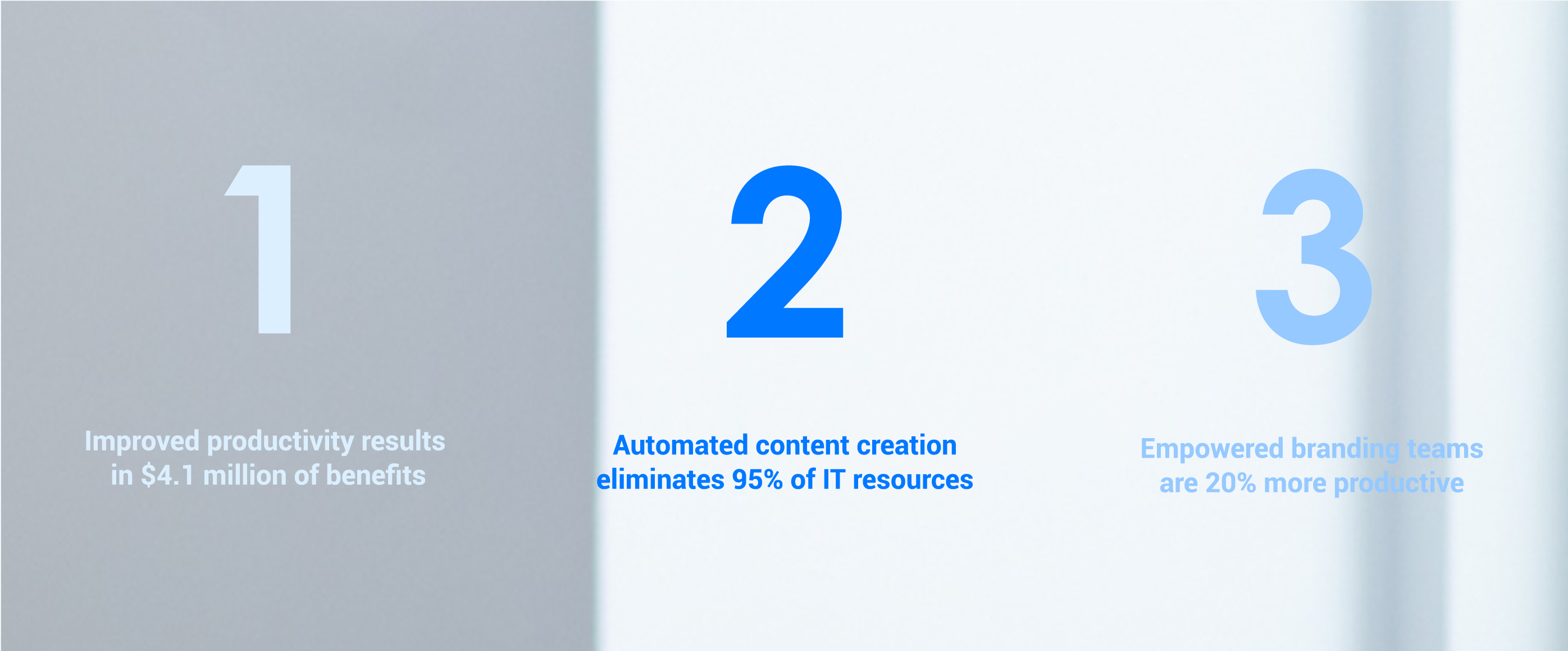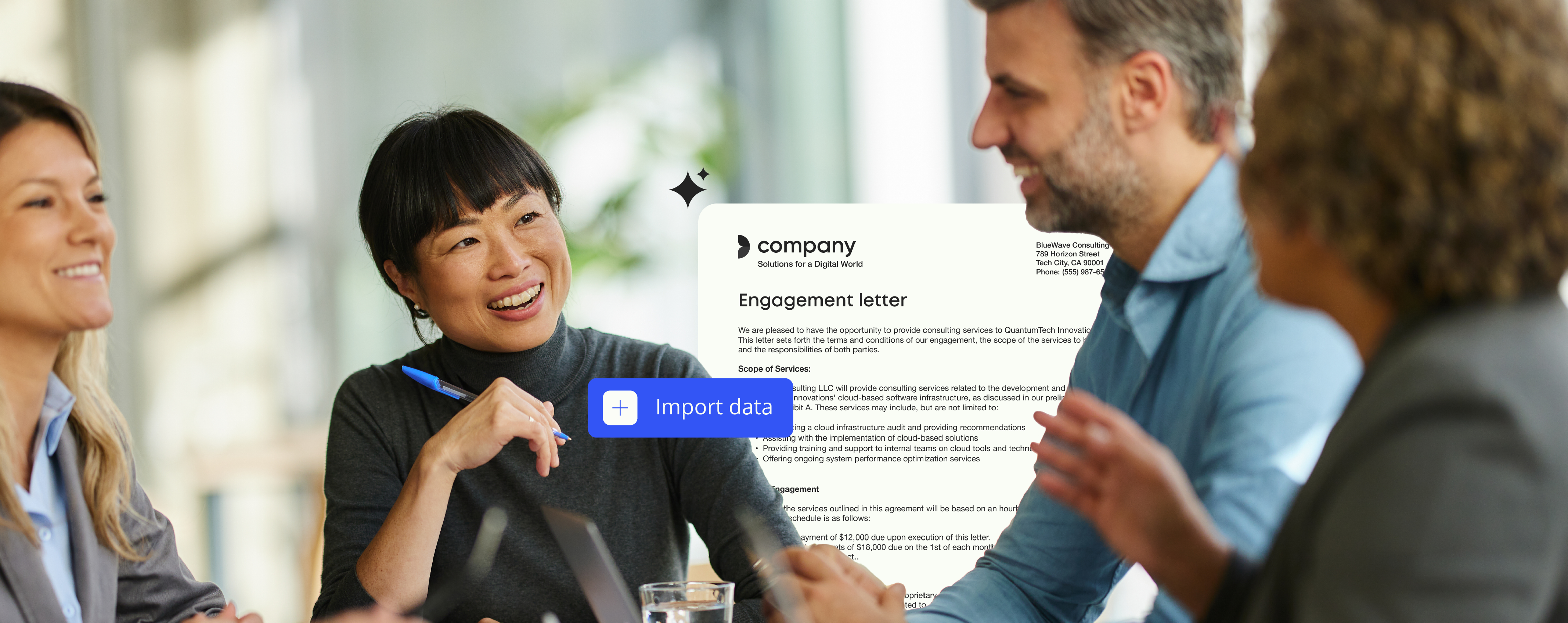3 major benefits of content governance for the finance industry

Supercharged by the rise of market-share stealing challenger banks and fast moving consumer demands, the digital transformation race in the banking and financial services sector is showing no signs of slowing down.
Global spending on digital transformation is currently estimated to reach $1.97 trillion by 2020 and according to Accenture’s latest report on digital opportunities in capital market firms, 93% of technology executives are preparing to invest in future-proofing digital solutions. “The industry is changing so quickly,” the CTO of Investment Management firm Schroders told Accenture: “that if you can’t move fast, you’ll be left behind.”
Alongside major enterprise tech movements for the sector – AI, blockchain, security and the rise of a digital workforce, the adoption of innovation processes and tools to existing legacy technology has become vital in freeing up resources and enabling banks and financial firms to stay competitive in an increasingly disruptive industry.
Released earlier this month, a new TEI study by Forrester investigated this trend in relation to the automation of content creation workflows, interrogating how it influenced a company’s digital transformation capacities, as well as any additional benefits of company-wide content governance for banks and financial services firms.
Reviewing three enterprises – totaling 50,000 employees in the banking and professional services sectors, the report focused specifically on the introduction of Templafy’s cloud-based document and presentation automation solutions and analyzed the qualitative and quantitative results of eliminating manual work required to create, manage and review documents such as financial reports, contracts, invoices and customer presentations.
From cutting millions of dollars in operational costs to safeguarding enterprise-wide brand and legal compliance, we unpack three main findings of the Forrester report to look at the major benefits banks and financial services firms can achieve when you decide to automate document and presentation creation workflows as part of your internal digital transformation.
1. Improved productivity results in $4.1 million of benefits
It will come as no surprise to those in the industry that Forrester’s June 2019 report found that employees spend an average of 16 hours a week creating documents, presentations and other content within the Office software suite.
No matter how sophisticated and digitally advanced a company’s products, for any modern enterprise in the banking and financial services sector, document and email creation is still one of the most central and extensive business processes. It touches everything from internal communications, sales pitches, reporting, contracts, legal forms and much more.
When operating with manual content creation processes, organizations often end up working in a haphazard nature – creating documents from scratch, pulling together different templates from central repositories or using dated assets from their desktops. This not only results in time wasted producing documents and searching for assets, but it also requires additional resources to fix inconsistencies such as differing typeface, font size, brand-compliant images, document layout and legal disclaimers. Work is also often duplicated.
Access to assets drives employee efficiency
In comparison, Forrester found that when companies had access to searchable, cloud-hosted libraries of on-brand templates, slides and images, employees could find, produce and share dynamic content in a fraction of the time, 30% less time in fact. In relation to creating customer-facing documents and presentations, the results were even more impressive, with employees claiming that improved access to assets meant documents were created 50% faster.
Taking steps to automate document and presentation creation workflows as part of your internal digital transformation, not only frees up time within the creation process but also influences the review process. In giving employees 24/7 access to cloud-hosted tools such as a pre-populated hub of on-brand assets, Forrester found Templafy users also reduced time spent reviewing content for inconsistencies to less than four hours a week. For instance, when discussing the before and after scenario of submitting presentation images, one employee told Forrester:
“Our risk management approval process was a nightmare that could take 24 to 48 hours. We cut that out completely.”
Forrester also found this speedy review process had a “trickle-up” effect, with senior associates and decision-makers using handy features such as Templafy’s checker feature to spend less time reviewing mistakes from juniors and mid-level employees. One interviewee commented:
“The check features allow us to review consolidated content and ensure it’s consistent throughout. It allows us to do this at the click of a button and may take 20 seconds to review everything rather than having to go slide by slide.”
Document automation = more time for high-value work
It’s one of the major benefits of company-wide content governance for banks and financial services firms that automated content software streamlines the creation and review process to allow employees more time for higher-value work – communicating with clients, working on an additional pitch, researching new technologies to the market.
As a direct result of a more productive workforce, companies also found some serious money also becomes available for digital spending. According to Forrester’s TEI report, implementing Templafy’s solutions resulted in $4.1million in benefits over three years and an ROI of 251% – a considerably sizeable budget to put towards improving digital ecosystems and introducing the latest digital transformation tools and platforms.
2. Automated content creation eliminates 95% of IT resources
Another of the key benefits of company-wide content governance for banks and financial services firms is the near-total elimination of IT resources for basic support tasks.
As the Forrester report details, after introducing Templafy’s sophisticated yet easy-to-use, centralized platform, branding teams could now take control of company updates. This lead to the IT team reclaiming 95% of the time usually spent managing the organization’s content and templates.
One interviewee told Forrester:
“Previously, we had the branding team liaising with IT, who were spending about a week’s worth of work for every major update. That’s completely gone now. Now, it’s pretty much the branding team doing it themselves.”
With the migration to cloud-hosted services, the same interviewee also spoke to the fact that the IT team no longer wasted time maintaining company servers.
IT specialists can focus on innovations
In terms of digital transformation opportunities, this step to automate document and presentation creation workflows as part of your internal digital transformation essentially frees up your team of IT specialists to focus on innovation rather than maintenance – a concept explored in Gartner’s 2019 paper 5 Digital Transformation Identities of Financial Services Organizations.
Outlining the varying stages of digital transformation within the industry, the study found that while 49% of financial services firms analyzed fell within early stages of digital transformation (categorized as a Traditional Business or Early Stage Digital), only 12% could be described as Digital Transformers.
The difference between early and mature stages of digital transformation is extremely significant. As a Traditional Business, a company tends to invest in more traditional strategies, focusing on growth within existing markets as opposed to process optimization via new technologies. Examples cited by Gartner include Ohio National who announced it would cease selling annuities to focus on other lines of life insurance and Kansas City Life who bought competitors to grow its footprint in its local market.
In comparison, Digital Transformers go beyond industry norms to unlock new areas for growth, create new revenue streams and enter new markets with disruptive technologies such as AI, blockchain and augmented analytics. The likes of Allstate, AXA and Generali for example have all implemented open APIs to expand their value chain and collaborate with valuable third-party alliances.
Giving IT teams the time and financial resources to think more ‘Digital Transformer’ and less ‘Traditional Business’ positions banks and financial services firms as industry innovators, achieving an edge over competitors and driving new revenue opportunities.
3. Empowered branding teams are 20% more productive
Despite moving control of some tech processes from IT to branding teams, rather than add to a Brand Manager’s workload, Forrester found another of the benefits of company-wide content governance for banks and financial services firms was a 20% increase in productivity for the branding department.
When operating with traditional content creation processes, branding teams often must painstakingly update and audit dated documents, templates and server-based content repositories. Even minor changes to organizations’ templates can turn into time-consuming challenges for the branding team – particularly in large-scale and international businesses.
Once these changes have been made, they then need to be communicated to fellow employees, usually via back and forth communication and with no guarantee new templates and assets will be circulated. This means to ensure consistency, branding teams need to manually audit content leaving their organization with sample audits which Forrester’s researched enterprises described as ‘time-consuming, sporadic, and not very effective’.
Even with thorough manual audits, frustrated branding teams can still find that often inconsistent branding leave the organization on a regular basis. Speaking specifically about email signatures, one interviewee told Forrester: “Email signatures were a cowboy industry where everyone’s email signature was whatever they saw fit. Bob Smith could call himself, ‘King of the World,’ on his signature if he wanted to.” Needless to say, inconsistencies reflect poorly on organizations, posing major compliance issues for global firms.
Instantly distribute and update content
Fortunately, introducing solutions to automate document and presentation creation workflows as part of your internal digital transformation also improves enterprise-wide governance process. After implementing Templafy, the branding teams interviewed could automatically and centrally push updates out to users, who accessed them directly within the document creation programs they were already using. The branding team also gained optimum visibility into usage, auditing the template and content library accordingly, resulting in branding teams reclaiming 20% of their time.
Just as one of the benefits of company-wide content governance for banks and financial services firms is an IT team more focused on innovation, another knock-on effect is a branding team that can work on growing brand value and partnerships in an increasingly competitive digital market. This has now become more important than ever as players outside of the traditional sector enter the field. For instance, Deloitte’s 2018 global consumer survey on digital banking concluded that today’s consumers prefer brands such as Apple, Amazon and Google. As these tech giants start providing their own financial services, creating, maintaining and growing a memorable, likable and reliable brand is becoming integral to a successful digital transformation strategy.


